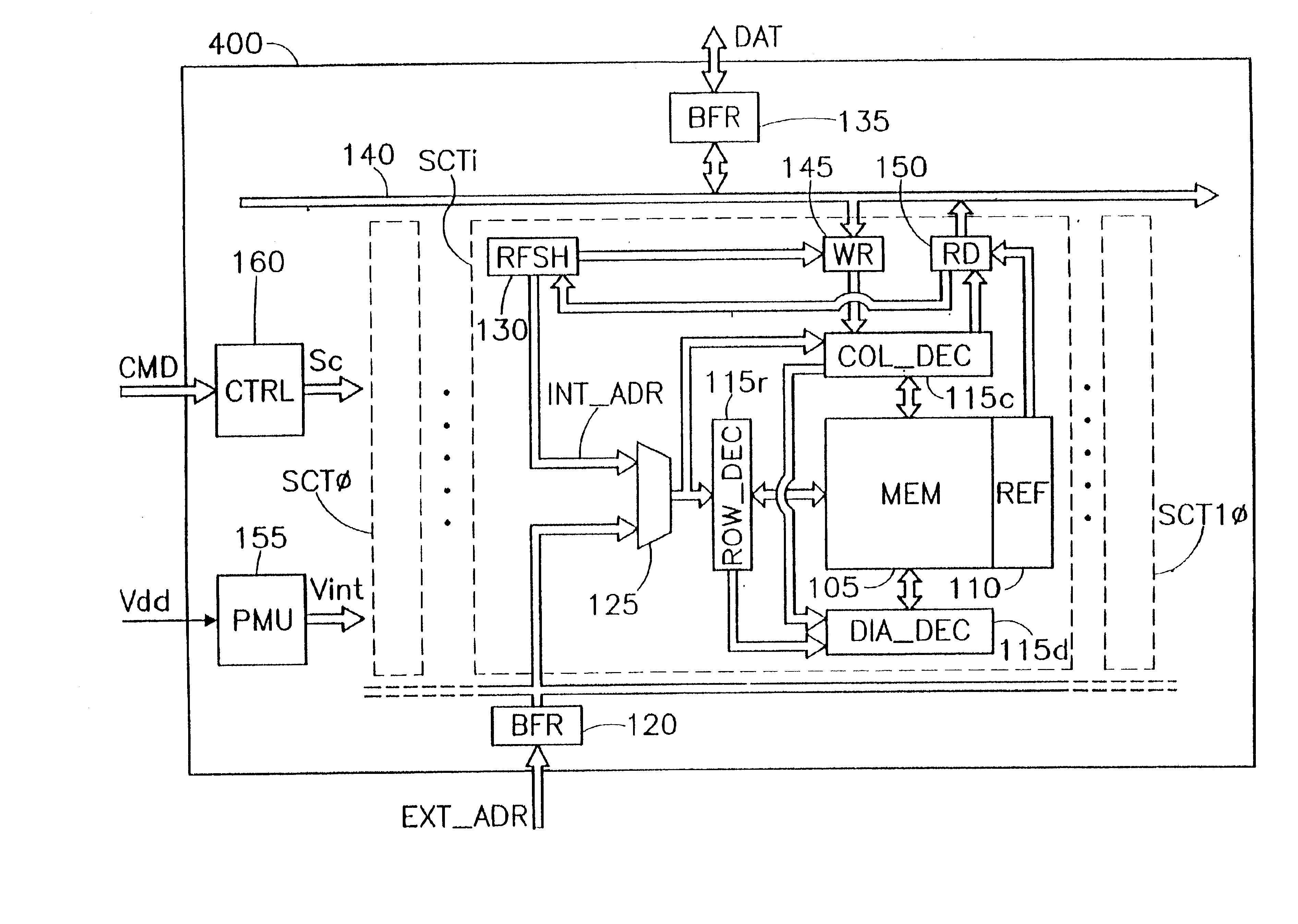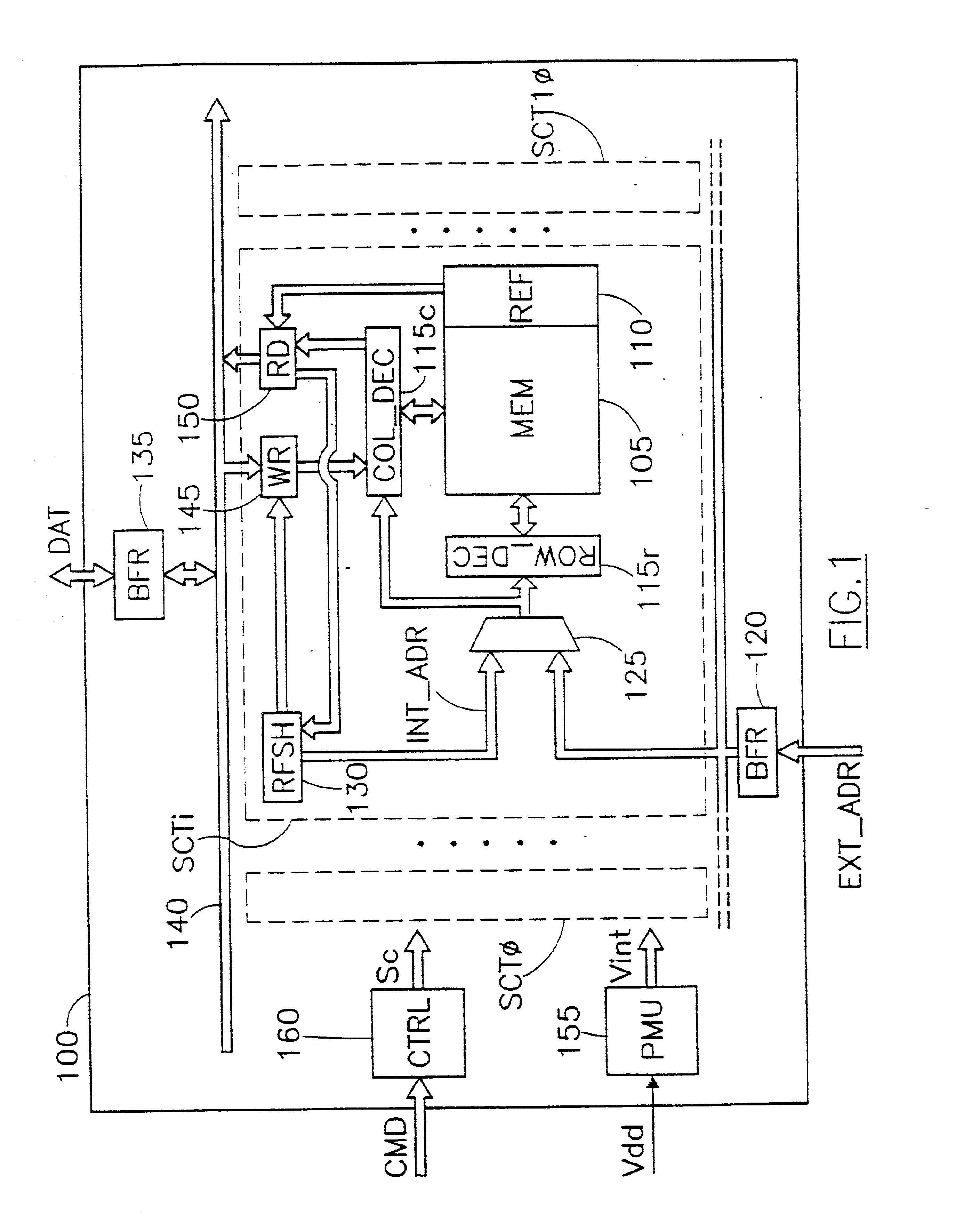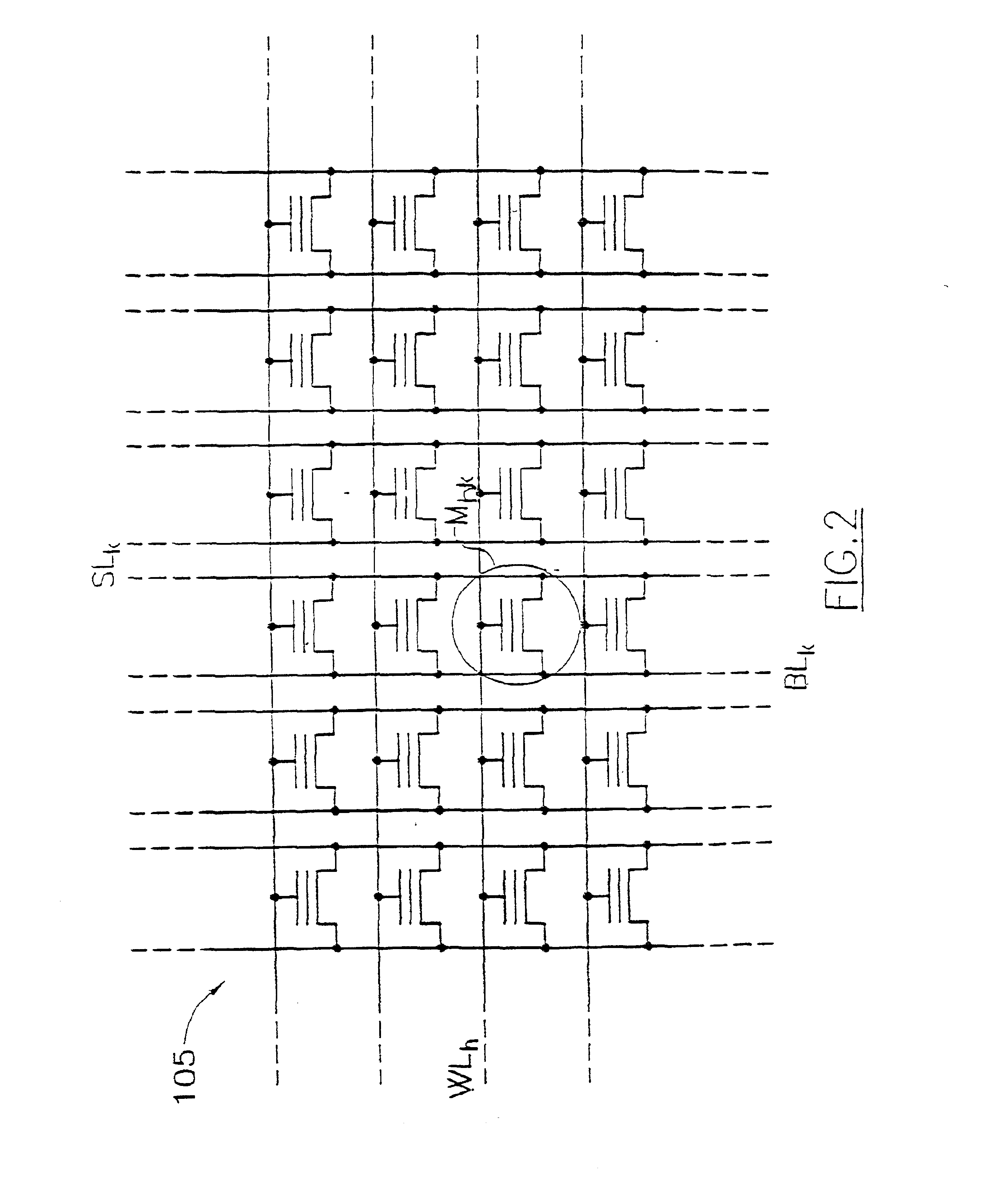Method of refreshing an electrically erasable and programmable non-volatile memory
a non-volatile memory, electrically erased technology, applied in static storage, digital storage, instruments, etc., can solve the problems of data retention, loss of electric charge stored, and particular acute problems of modern flash memory
- Summary
- Abstract
- Description
- Claims
- Application Information
AI Technical Summary
Benefits of technology
Problems solved by technology
Method used
Image
Examples
Embodiment Construction
It should be understood that these embodiments are only examples of the many advantageous uses of the innovative teachings herein. In general, statements made in the specification of the present application do not necessarily limit any of the various claimed inventions. Moreover, some statements may apply to some inventive features but not to others. In general, unless otherwise indicated, singular elements may be in the plural and vice versa with no loss of generality. In the drawing like numerals refer to like parts through several views.
With reference in particular to FIG. 1, a flash memory 100 is shown. The flash memory 100 is segmented into a plurality of sectors SCTi (for example, eleven sectors with i=0 . . . 10); a generic sector SCTi includes a matrix (MEM) 105 of memory cells, with a respective array (REF) 110 of reference cells. Typically, the flash memory 100 has an asymmetric architecture, wherein a first sector has a reduced capacity in comparison with the other sector...
PUM
 Login to View More
Login to View More Abstract
Description
Claims
Application Information
 Login to View More
Login to View More - R&D
- Intellectual Property
- Life Sciences
- Materials
- Tech Scout
- Unparalleled Data Quality
- Higher Quality Content
- 60% Fewer Hallucinations
Browse by: Latest US Patents, China's latest patents, Technical Efficacy Thesaurus, Application Domain, Technology Topic, Popular Technical Reports.
© 2025 PatSnap. All rights reserved.Legal|Privacy policy|Modern Slavery Act Transparency Statement|Sitemap|About US| Contact US: help@patsnap.com



